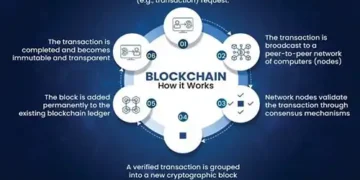Blitz Bureau
NEW DELHI: India’s linguistic landscape is among the most diverse in the world, with 22 Scheduled Languages and hundreds of tribal and regional dialects spoken across its vast geography. As digital transformation accelerates, the need to embed this linguistic diversity into digital infrastructure has become critical.
The Government is leveraging advanced technologies such as Artificial Intelligence (AI), Natural Language Processing (NLP), machine learning, and speech recognition to build intelligent, scalable language solutions. These initiatives aim to democratise access to digital services by enabling seamless communication, real-time translation, voice-enabled interfaces, and localised content delivery. By building a robust technological ecosystem that respects linguistic diversity, India is setting the foundation for an inclusive digital future where every citizen, regardless of his/her mother tongue, can participate fully in the digital economy and governance.
Key platforms AI-driven language platforms and expansive digital repositories are reimagining how India’s languages are preserved, used, and evolved. Platforms like Bhashini and BharatGen offer multilingual support across governance, healthcare, and education. Initiatives like Adi-Vaani bring tribal languages into the digital fold. Adi-Vaani: Founded in 2024, AdiVaani is the country’s first AI-driven platform dedicated to the real-time translation and preservation of tribal languages. It combines the precision of Artificial Intelligence with human linguistic expertise to deliver seamless multilingual experiences.
PPEL scheme: The Scheme for Protection and Preservation of Endangered Languages (SPPEL) focuses on documenting and digitally archiving endangered Indian languages – particularly those spoken by fewer than 10,000 people. It generates rich text, audio, and video datasets that serve both preservation and innovation.
Sanchika: Managed by Central Institute of Indian Languages, Sanchika aggregates dictionaries, primers, storybooks, and multimedia resources for Scheduled and tribal languages. BharatGen: It develops advanced text-to-text and text-to-speech translation models for all 22 Scheduled Languages. It leverages data from SPPEL and Sanchika to create multilingual AI s y s t e m s that power applications in governance, education, and healthcare. .
GeMAI: To enhance user accessibility and inclusivity, the Government eMarketplace (GeM) has integrated GeMAI, an AI-powered multilingual assistant that leverages advanced natural language processing and machine learning to provide voice and textbased support across multiple Indian languages.
Bhashini: It is a pioneering AI platform enabling realtime translation for 22 Scheduled Languages and tribal languages. It facilitates access to Government services, digital content, and promotes digital inclusion through machine translation, speech recognition, and natural language understanding. TRI-ECE Scheme: The Tribal Research, Information, Education, Communication and Events Scheme supports innovative research and documentation projects aimed at preserving tribal languages and cultures.
As part of this initiative, the Ministry has backed the development of AIbased language translation tools capable of converting English/Hindi text and speech into tribal languages and vice versa. The project also emphasises community involvement through collaboration with tribal research institutes and language experts, ensuring linguistic accuracy and cultural sensitivity.
Digital archives
Institutions like the Central Institute of Indian Languages and the Indira Gandhi National Centre for the Arts collaborate with Bhashini by digitising ancient manuscripts, folk literature, and oral traditions. These digital archives enrich AI and Natural Language Processing (NLP) systems, supporting both preservation and state-of-theart translation solutions- reinforcing the link between cultural heritage and modern technology
































